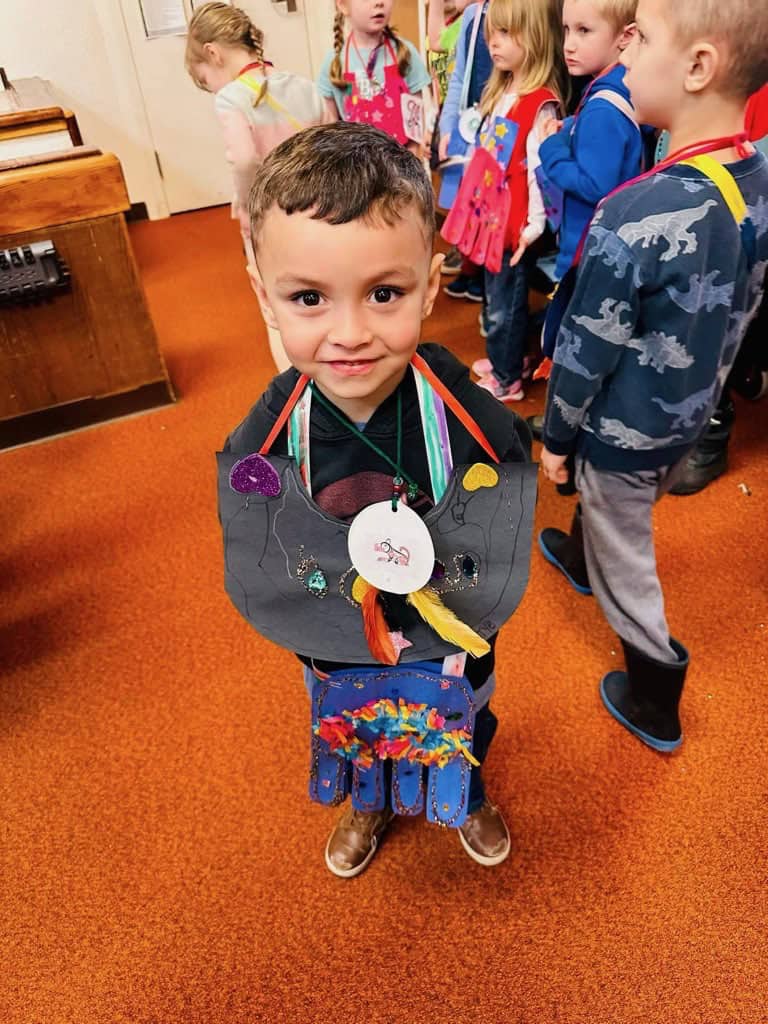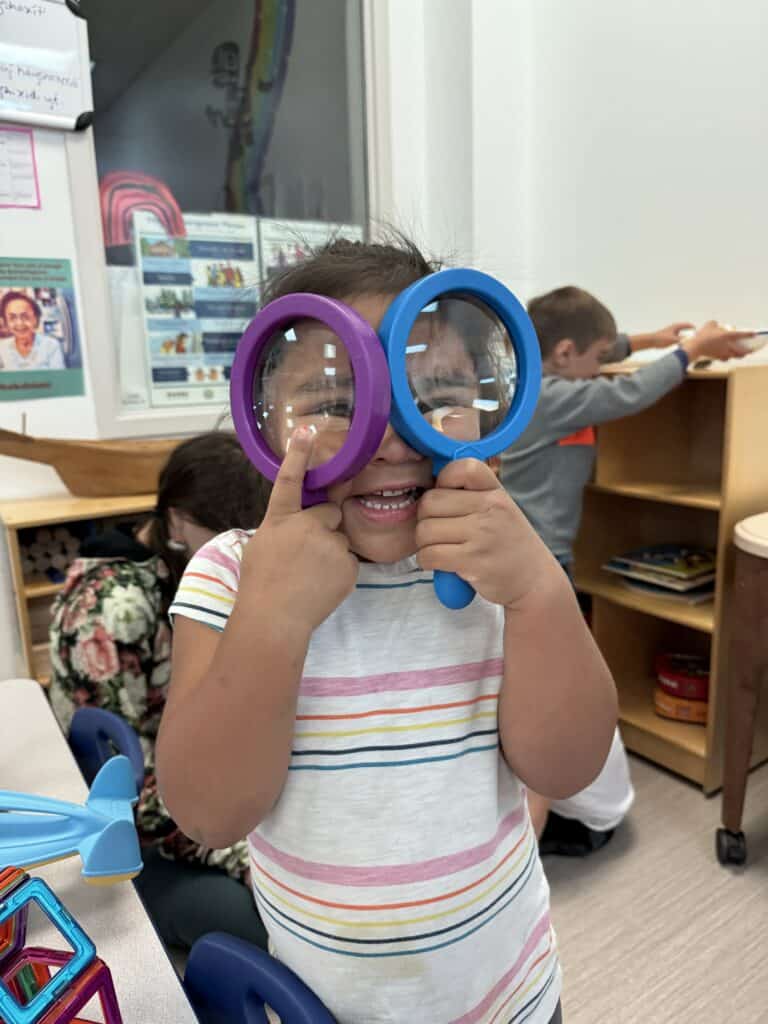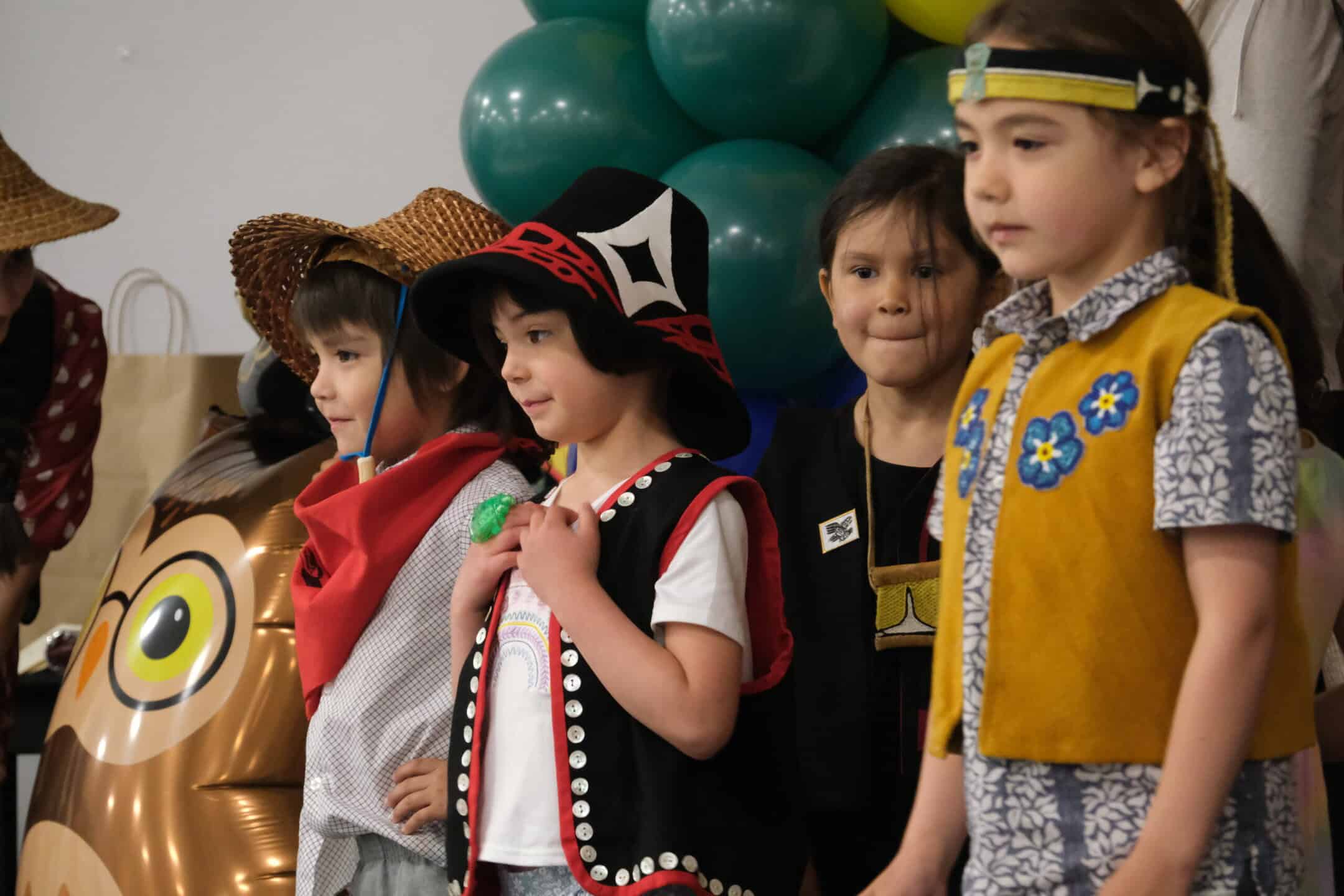Connecting kids to their culture means incorporating language and art in the classroom at an early age.
Tlingit & Haida’s Early Education Division aims to do that by creating a core curriculum centered around the Southeast Alaska Traditional Tribal Values.
“We’re looking at our activities through an Indigenous lens,” said Early Education Senior Director Ethan Petticrew. “This gives our children exposure to educational opportunities and creates in them a sense of pride and understanding of who we are.”
The Early Education Division encompasses five programs – Child Care, Head Start, Little Eagles and Ravens Nest (LEARN), Haa Yoo X’atángi Kúdi Lingít Immersion in Juneau, Alaska and Xaad Kíl Immersion in Craig, Klawock and Hydaburg, Alaska.
In the LEARN classrooms, language is incorporated in subtle ways; a poster telling kids to listen, “Kinyis.aax” or a short Lingít song during circle time.
There are 10 Head Start locations around Southeast Alaska that serve children ages three to five. Staff engage the kids in preschool-friendly activities with an Indigenous twist.

In Wrangell, teachers helped their students create regalia out of construction paper, using glitter “beads” to line the edges of the octopus bags and dance bibs. Petersburg Head Start hosted a family drum making night so each child can have their own drum to use in class.
At the Taashuka classroom in Juneau, teacher Stacy Roberts leads the kids in a Lingít version of the classic song “Heads, Shoulders, Knees and Toes.”
“We need to live our values, not just talk about them and teach about them,” Ethan said.
After the generational trauma and language loss inflicted by boarding schools, Tlingit & Haida is creating a new generation of speakers by bringing traditional languages into the classroom through immersion programs.
“Has du eetíx’ x’aakeidí sákw yei ng̱atee haa yátx’i. Let it be that our children are the seeds left in their remains,” said Daaljíni Cruise, Tlingit Immersion Manager for Haa Yoo X’atángi Kúdi, the Lingít language immersion nest that started in 2019.
Only Lingít is spoken in the classroom so the children can be fully absorbed in hearing their Native language. Daaljíni’s two older children both graduated from the program and her three-year-old is one of six students in the nest this year.
“I think for Tlingit & Haida to be invested in our language and invested in our children is to be invested in our community,” Daaljíni said.

That investment is being made on Price of Wales Island as well where the Tribe plans to increase Lingít language opportunities and open three Xaad Kíl pre-school immersion classrooms.
Lauryn Framke is one of the new instructors hired to boost the Xaad Kíl program. In high school she began learning from Skíl Jáadei in a Haida Language Learners Group and through classes at the University of Alaska Southeast (UAS). She went on to get a Bachelor of Liberal Arts in Alaska Native Languages and Studies from UAS.
“Our languages are in everything,” Lauryn said. “Our languages are ingrained into our culture as Tlingit and Haida peoples. I became a X̱aad Kíl teacher because I feel a deep responsibility to my ancestors and to our people to perpetuate X̱aad Kíl by teaching others.”
Ethan says incorporating more language into the early education programs sets a good foundation for children and teaches through the worldview of our ancestors.
“It’s our job to educate our kids. No one loves our children more than us, nobody is more invested in their lives than we are,” he said.
Registration for the HYXK 2025-2026 school year is open until May 9, 2025.
